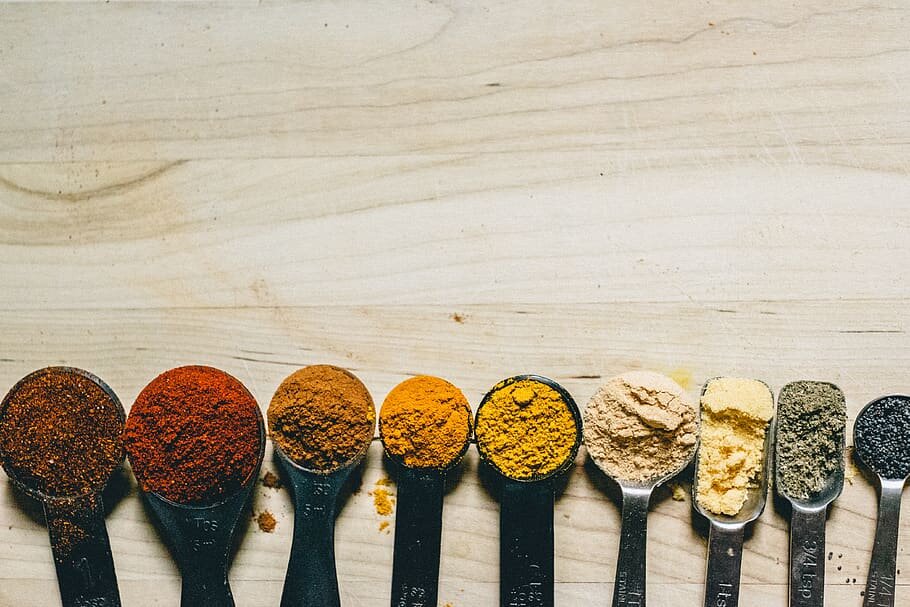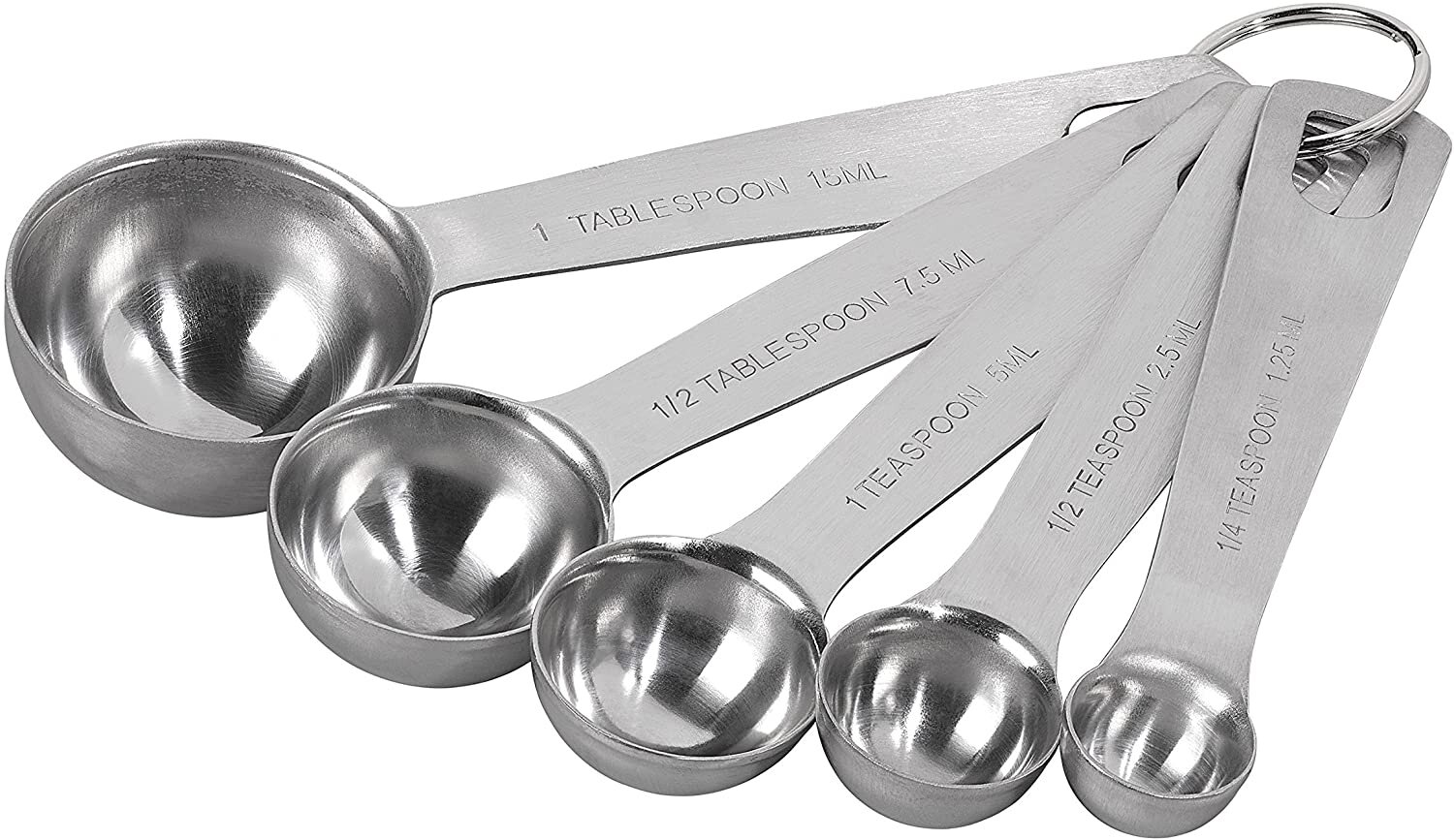Measure It Right
Not everything you cook needs to be measured precisely, but some things do. There’s a right tool for each type of measurement required in cooking. This post is about the measuring tools you need and some basic conversions for general measurements.
Measuring spoons come in many shapes, materials and price ranges.
Measuring spoons come in many different shapes, materials, and prices. I recommend a set that includes 1/8 tsp, 1/4 tsp, 1/2 tsp, 1 tsp, and 1 tbsp.
When using for a dry measure, measure out a heaping spoon full and then level off with a knife. When measuring for a liquid, hold the spoon over a clean, dry bowl while you are pouring the liquid into the spoon. Do not hold it over the dish you are preparing.
*Conversions:
1 tablespoon = 3 teaspoons
4.05 tablespoons = 1/4 cup
1 tablespoon = 14.78 ml
*Cup measurements are for US legal cup size, which is slightly larger than an imperial cup. The difference in size usually doesn’t create a problem, but when measurements need to be very specific, using metric measurements by weight and by volume are most accurate.
Measuring Spoons
Price Range: $1.69 - $22.00
Measuring Cups, Dry
Price Range: $5.99 -$50+
Again, there are a wide range of dry measuring cups available. One advantage to plastic cups is that they don’t dent, but a downside is the the printing on plastic tends to wear off with use. Metal cups have engraved sizes, but if a cup is dented it is no longer accurate to measure volume.
To use a dry measuring cup, scoop the dry ingredient into the cup so that it is heaping full, tap the side of the cup with the flat edge of a knife and then level the cup with the flat edge of the knife. Do this over a clean dry bowl or your container you are measuring from.
If you are measuring dry ingredients with multiple cups of the ingredients (5 cups of flour, for example), measure the cups into a separate bowl and not straight into your recipe. If you lose count, you can start over without ruining your dish. This is also a good argument for using weight rather than volume measurements.
I recommend getting a set with the following volumes:
1/8 cup
1/4 cup
1/3 cup
1/2 cup
2/3 cup
3/4 cup
1 cup
Measuring Cups, Liquid
Price Range: $6 - $36+
Most liquid measuring cups are made of either plastic or glass as you need to see through the material to read the volume. The cup should have a pouring spout and be marked for measurements in cups, milliliters; and ounces, pints and quarts. Cups are available in a number of sizes. I recommend purchasing several liquid measuring cups, including one or two of a 2-cup size. The reason for this is that by having several, you don’t have to stop and clean your measuring cup while preparing a recipe.
To read the measurement on a liquid measuring cup, set the cup on a flat surface and pour your liquid into the cup, stopping before you get close to the graduation mark you need. View the cup at eye level. Add liquid to reach the line. If you observe from above, it is quite likely to be off.
Digital Kitchen
Scale
Price Range: $10 - $106+
A digital kitchen scale is one of the best investments you can make if you bake or if you are watching your caloric and nutrition intake. The wide range in pricing on scales can be a reflection of style, materials, or accuracy. I personally use a $20 scale that is accurate to 0.5 grams and has weights in metric and US weights.
To use, read your manufacturer’s manual, and make sure the scale is on a flat, stable surface with nothing touching it.
Converting dry volume measurements to weight measurements is where it can get tricky. One cup of all purpose flour is 120 grams, but one cup of sugar is 198 grams. King Arthur Flour has a great chart on their website that you can use for conversions if your recipe does not give you the unit type you need.












